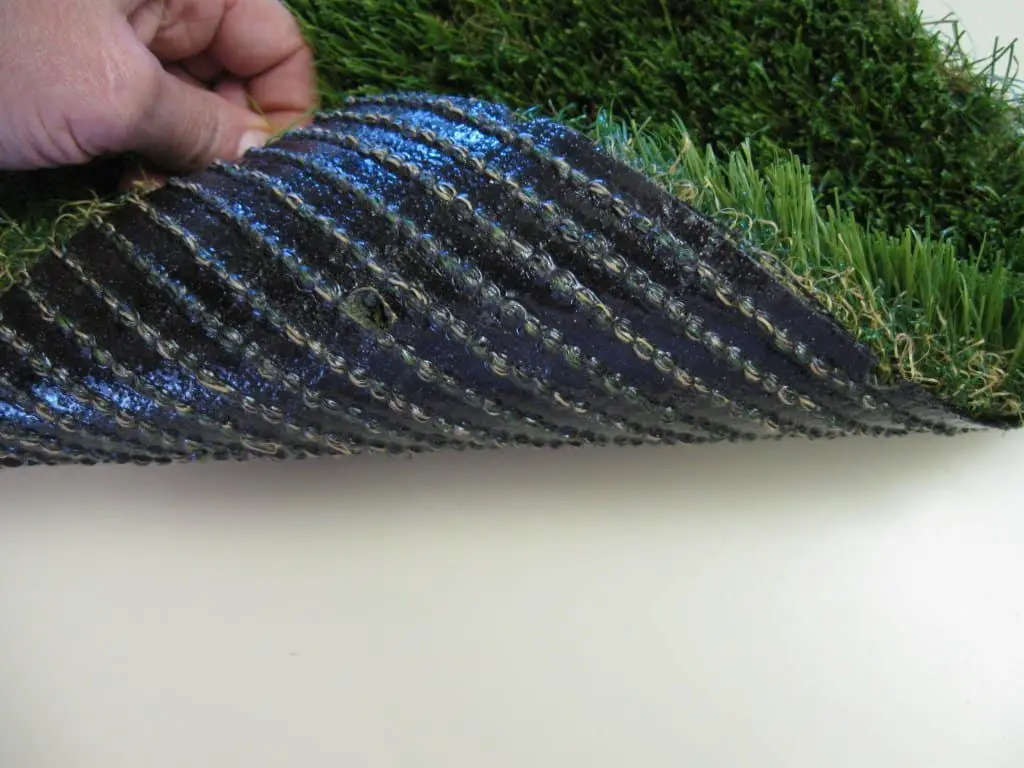The 7 Most Popular Shed Roof Materials … In Detail
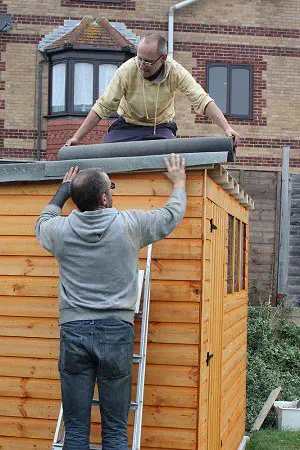
Decide what shed roof material you will use for your new shed...
Quick Navigation
The roof of your shed is not only its crowning glory, it is also the first line of defense against rain, snow, sun, and wind.
With this in mind, it is very important that you choose the right shed material the first time or you will soon be faced with replacing the roof again.
Here we take a good look at the most common shed roof materials along with what you should be looking for in them.
Choosing the Right Shed Roof Materials
The most important thing you need to keep in mind when choosing the right shed roof materials is that the material you choose must be able to protect your shed from any extremes in weather the area you live in is likely to encounter.
At the same time, since you and your neighbors are going to have to look at your shed and its roof, the material you choose should be at least somewhat aesthetically appealing.
Bear in mind that it is important for you to understand that there are a number of shed roof materials for you to choose from including metal, asphalt shingles, rolls of roof felt, terracotta tiles, and more.
One interesting thing worth noting, is that over the past few years there has been a major move from using natural materials such as cedar shakes towards using engineered roofing materials such as synthetic felts, sheet metals, and concrete tiles.
There are several reasons behind this movement including cost, environmental concerns, and in many areas changes to local construction codes.
Speaking of which, you need to be sure you check your local codes before building your shed or installing a new roof to be sure they do not require specific shed roof materials or outlaw others.
Factors You Should Consider
- Your shed roof should be pleasant to look at
- Your shed roof must be waterproof
- Your shed roof should be affordable
- Your shed roof should be durable
- The pitch of your roof
Pleasant to Look At?
After all, it is just a garden shed, why should you worry about how the roof looks when it is finished?
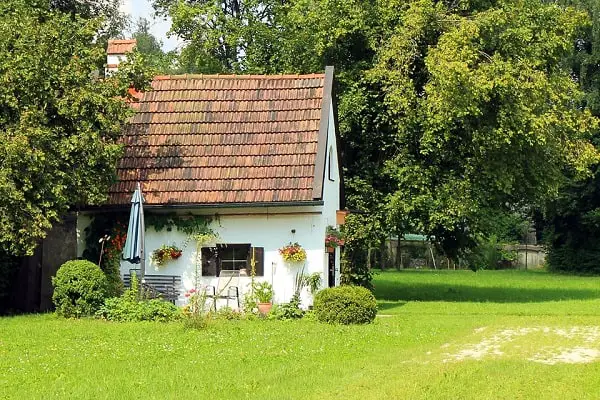
Garden Shed
An ugly shed roof will not only detract from the way it looks to you and your neighbors but may also affect the overall appraised value of your home if you decide to sell it.
Waterproof?
Since you are going to be storing any number of items in your shed, many of which need to be kept dry, the shed roof materials you choose must be waterproof.

Shed Snow
Not only must they be waterproof, but they must also be able to withstand ice and snow buildup if you live in an area with this type of weather.
Affordable
This is the point at which you need to consider your budget and measure it against how long you want your new shed roof to last.
While buying inexpensive materials may be a good way to save money right now, consider whether cheap materials are going to provide you with the best level of protection and longevity.
You may find paying a little more in the first place can save a lot of money in the future.
Durability
This is more a factor of where you live, the types of weather you are likely to have during the year, and how much money you are willing to spend.
For example, if you live in an area where high winds tend to blow frequently like I do, 15 lb. roofing felt is not likely to be your best choice. You may be better off using 30 lb. felt, sheet metal, or asphalt shingles.
The Pitch of Your Roof
The pitch of your shed's roof can range from flat up to 20 degrees or more. In most cases, the pitch is decided based on the weather conditions where you live.
Areas with lots of rain or snow tend to have steeper pitches. However, the pitch of your roof also affects your choice of shed roof materials.
Pitch | Shed Roof Materials |
|---|---|
Flat to 10 degrees | Wood base with roof felt or sheet metal |
10 to 20 degrees | Roof felt, sheet metal, shingles, tiles (clay or concrete) |
20 plus degrees | Sheet metal, concrete interlocking tiles, clay tiles |
Finally, here is a video about choosing the right roofing materials. While this video centers on home roofs, the basic concepts can be applied to finding the right roof for your shed.
7 Available Shed Roofing Materials
Here we are going to take a closer look at the various types of shed roofing materials and what they have to offer.
1. Roofing Felt

Roofing Felt - image courtesy of Amazon
Roofing felt is sold in rolls that are typically 36 inches wide by 10 to 12 feet long. It is typically sold by weight, which is an indication of how thick the felt is, in most cases either 15, 30, or 90 lb. weights. Obviously, the higher the number, the thicker the felt is.
Thicker felt offers better protection from the weather, but at the same time,it is harder to work with, especially for someone who is not used to working with it. Roofing felt is one of the least expensive forms of shed roofing materials.
Pros | Cons |
|---|---|
Inexpensive | Relatively short lifespan |
Mineral coated felt resists the weather | Nails may leak water |
Easy to install | Thicker 90 lb. felt can be hard to work with |
2. Asphalt Shingles
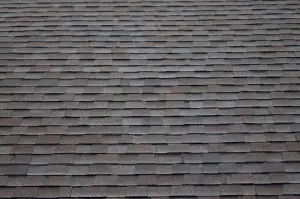
Image courtesy of ROOFPEDIA
The funny thing about using asphalt shingles is that you must have a layer of roofing felt on top of the wood before you install the shingles. However, this double layer will provide you with a much stronger and more weather resistant roof.
Asphalt shingles are one of the most common forms of roofing in use today and are a good way to make sure the roof of your shed matches the one on your house.
Asphalt shingles can last for as long as 20 to 30 years, which makes this type of roof an excellent value.
Pros | Cons |
|---|---|
Most common form of roofing | Require a felt underlayment for maximum waterproofing |
Large selection of colors | Requires some knowledge of roofing for best results |
Can last up to 30 years | Prone to impact damage |
3. Clay/Concrete Tiles
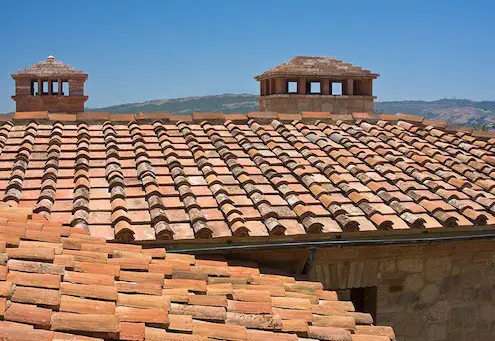
Image courtesy of bob vila
Clay tiles and their more modern counterpart concrete tiles have their origin in Europe, in particular, the Mediterranean region. They offer an extremely long-lasting and durable roof, but the big problem with either of these types of tile is that they are very heavy by nature.
If you want to use ceramic or concrete tiles on your shed, you will need to build a very strong subsurface to support the added weight.
Ceramic and concrete tiles can be quite beautiful to look at and are available in several colors and styles and can be quite expensive.
Pros | Cons |
|---|---|
Very durable and long lasting | Very heavy requiring strong structural support |
Fireproof | Very expensive |
Energy efficient | Tiles are fragile and can be easily broken by stepping on them or being hit |
4. Wood Shingles
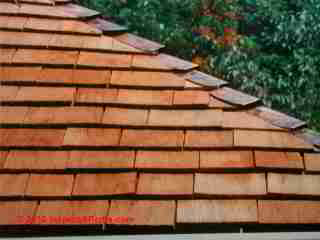
Image courtesy of InspectAPedia
Wood has been used as a source of roofing shingles for centuries and even today continues to make an excellent source of shed roofing materials.
Most wood roof shingles are made from cedar, pine, redwood, or western red cedar. They are a good choice for use on roofs with a steep pitch and are exceptionally pleasant to look for.
Worth considering, however, is that wood shingles are not particularly fire resistant and must be treated with a special flame retardant. You should also check with your local authority to ensure their codes allow for the use of wood shingles in any type of structure.
Pros | Cons |
|---|---|
Visually appealing | Not fireproof |
Made from a renewable natural resource | Will decay and rot over time |
Cooler than many other forms of roofing | May not meet local fire codes |
5. Rubber Roofing Shingles

Image courtesy of Rubber Roofing Shingles
Rubber roofing shingles or composite (might be plastic, rubber, or a mix of both) are becoming more commonplace. These shingles can be made to look like several other forms of roofing such as tile, slate, or shakes.
There are many advantages to using these types of shingles starting with the fact they are much lighter than the products they resemble.
The lightweight quality of these tiles also means you don't need to build a stronger sub-structure as you would if you were using ceramic tiles.
They are typically made from recycled materials such as old car tires, which also makes them good for the economy. Rubber roofing tiles also have a very long lifespan.
Pros | Cons |
|---|---|
Low cost | Visual quality varies |
Many are made from recycled materials | New product, no longevity information available |
Lighter than conventional concrete or slate tiles | Color may fade over time |
6. Metal Roofing

Image courtesy HOMETIPS
Metal roofing is offered in a range of materials including aluminum, copper, and steel. It is also available in sheets and tiles that let you choose a roof that is not only aesthetically appealing but will last for a very long time.
Metal roofing is very good at shedding snow and ice buildup is fireproof and offers exceptional long-term durability. Many sheet and tile metal roof products are made from recycled materials and can be recycled again once you are done with them.
You will need to keep the metal painted to prevent corrosion and should install rain gutters to handle the faster water run-off.
Pros | Cons |
|---|---|
Exceptional durability | Appearance may not match that of your home |
Fireproof | Must be kept painted to prevent rust/corrosion |
Many products made from recycled materials | Not a good choice for coastal regions |
7. EPDM Rubber Roofing Sheets
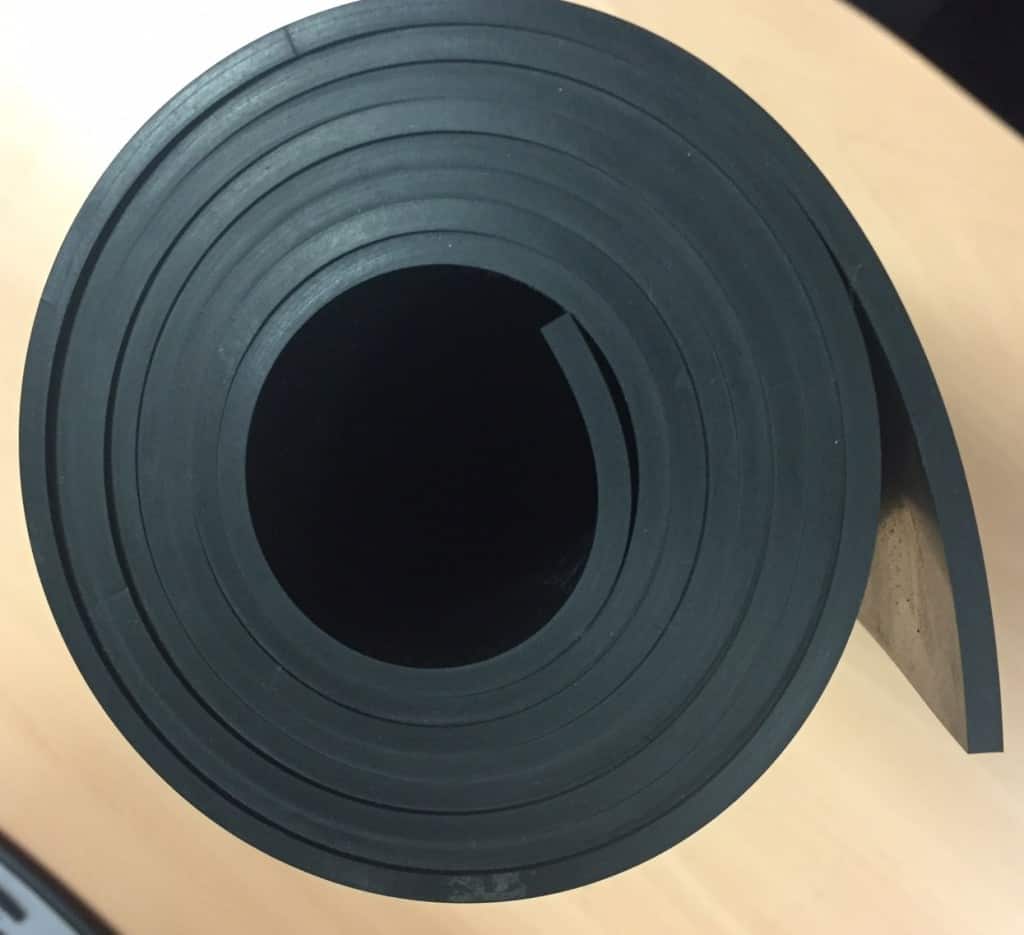
Image courtesy of PROCESS INDUSTRY FORUM
EPDM, or Ethylene Propylene Diene Terpolymer, is a rubber-like material that has been used as a commercial roofing material and on RVs for decades. This material can last for up to 30 to 50 years and is often made from recycled materials that can be recycled again.
The material stands up to rain, snow, ice, wind, fire, and the sun's UV radiation exceptionally well. Because EPDM breathes by design, it allows any vapors to escape, which helps to prevent blistering and bubbling. EPDM is also a relatively affordable material and can be easily repaired with patch coating that is readily available.
Pros | Cons |
|---|---|
Naturally, repels water | Can be ripped by sharp objects |
Long lifespan 30 to 50 years | Takes experience to get it installed right |
Moderately affordable | Sheets can be heavy and hard to work with |
2 Other Options
Just in case none of the shed roof materials above suits what you have in mind, here are a couple more for you to consider. For myself, I love the idea of a garden on the roof of my shed, see below.
1. Green Roof

Image courtesy of Green Roof Technology
When it comes to roofing for your shed, green is more than just a color, it is an environmentally sound way of putting the finishing touches on your garden shed project.
If your shed roof is flat or has a pitch of 18 degrees or less, consider building a “green” roof on it. This involves covering the roof in EPDM and then adding a frame that can be filled with soil and planted with a mix of grass and flower seeds.
Not only does this give you a beautiful shed roof all year rounds, but the plants help filter the air. Just remember you may need to weed and water your shed roof from time to time.
Pros | Cons |
|---|---|
Beautiful to look at | You still have to install an EPDM underlayment |
Great for the environment | Might have to water occasionally |
Great insulator | Can only be used on 18 degree or less pitch roofs |
2. Artificial Turf
Most of us would never even think about using artificial turf as a shed roof material. However, for those of you who want a “green” roof without having to go the trouble and expense of planting a real “green” roof, this is a viable option.
You will still need to install some form of underlayment such as roofing felt or EPDM. Then you simply attach the artificial turf to the underlayment and you have a gorgeous green roof that will last for quite a while.
Pros | Cons |
|---|---|
Practically zero maintenance | Not environmentally friendly |
Lightweight does not require a beefed-up substructure | Can be expensive if you want artificial turf that looks good |
Never needs to be watered | Will fade and become damaged by extremes in weather |
Topping It All Off
With all the different types of shed roof materials available, it is pretty hard to choose just one that comes out the clear winner as each has its good and bad points.
Roofing felt is relatively inexpensive, easy to install, and has a decent lifespan. Sheet metal offers a very long life, easy installation, and is relatively affordable. The only problem is that you must keep it painted if you don't want to have to deal with corrosion.
However, out of all the various options, these two are probably your best bet. Personally, I choose to use 90 lb. mineral embedded roofing felt and so far, it looks as good now as it did when I installed it five years ago.
If you liked what I have put together for you here, please let me know.
Let everyone know you enjoyed reading this on Facebook, Twitter, and Pinterest.
Thank you for reading this.
Related Articles:



